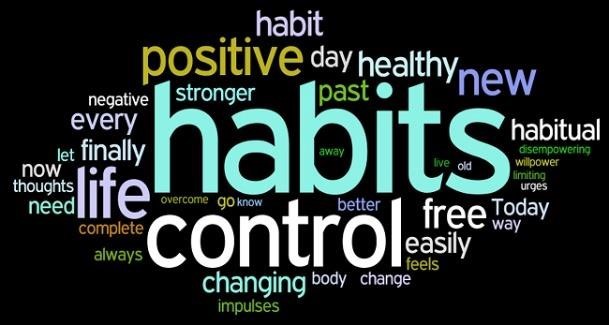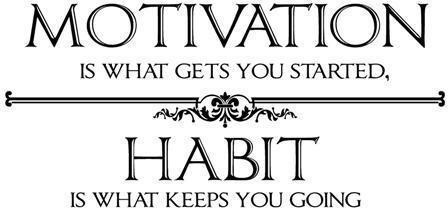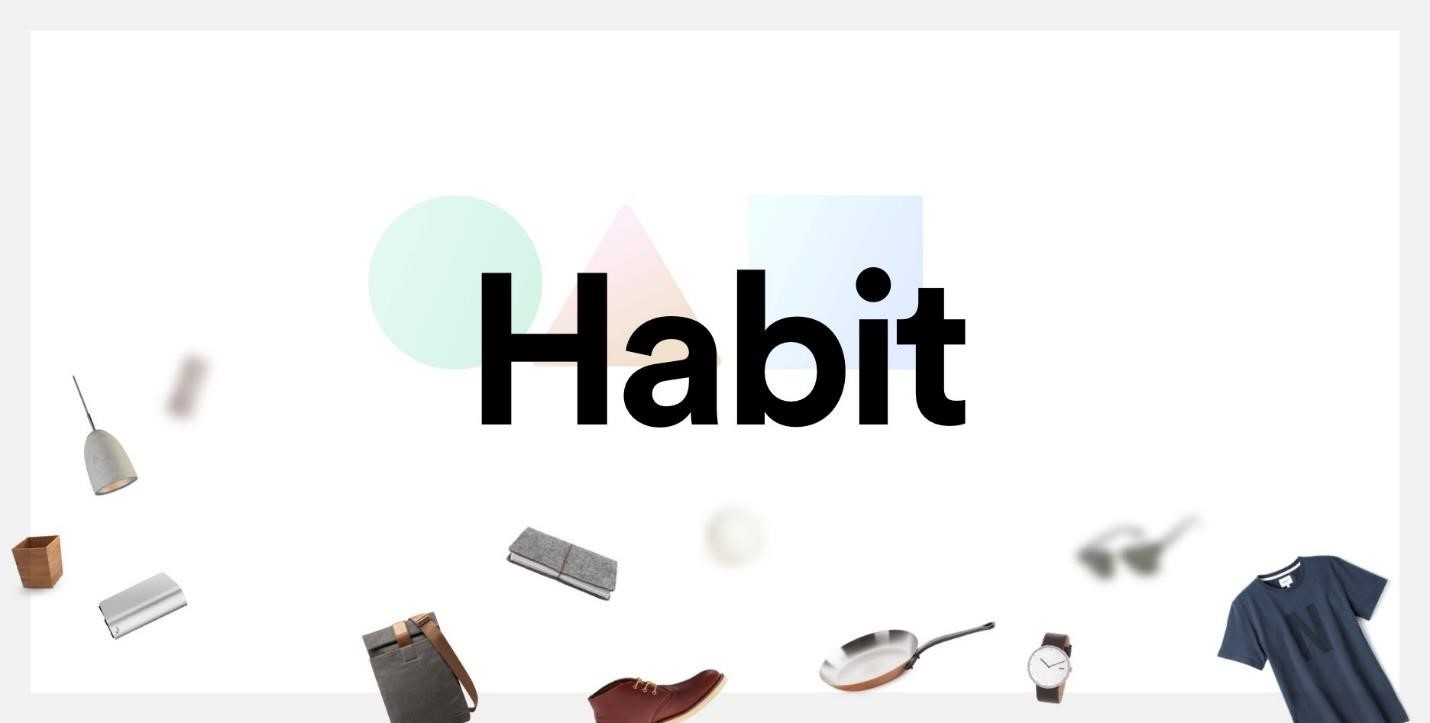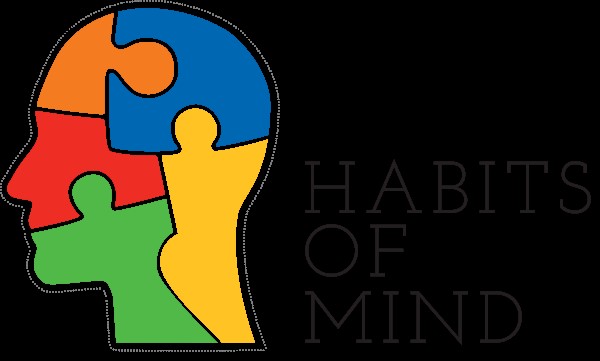In 2005, the late writer David Foster Wallace shared the following cautionary tale with a group of graduating college students:
“There are these two young fish swimming along and they happen to meet an older fish swimming the other way, who nods at them and says, ‘Morning boys, how’s the water?’ The two young fish swim on for a bit, and then eventually one of them looks over at the other and goes, ‘What the hell is water?’”
Foster Wallace was reminding the students that, just like those fish, our lives are largely determined by factors we never fully notice: our habits, those unthinking, automatic choices that surround us each day. They guide how we get dressed in the morning and fall asleep at night. They affect what we eat, how we do business, and whether we exercise or have a beer after work.
Each of our habits has a different catalyst and offers a unique payoff. Some are simple and others are complex, drawing upon emotional triggers and offering subtle neurochemical prizes. But every habit, no matter its complexity, is malleable. The most addicted alcoholic can become sober. The most dysfunctional families can transform themselves. A high school dropout can become a successful executive.
Changing habits is not just a matter of willpower, despite what you’ve probably learned. Sure, we all have habits we’ve tried to break and failed. And good habits we’ve tried to acquire and dropped. But the real obstacle to change for most people is not a lack of determination, it’s a lack of understanding how habit works. As it happens, habits all get modified in somewhat the same way. When an individual successfully quits smoking or an organization changes collective behavior to improve its safety standards, there are certain universal patterns at work.
During their extensive studies of the underpinnings of habit in the 1990s, researchers at the Massachusetts Institute of Technology discovered a simple neurological loop at the core of every habit. All habits, it turns out, consist of three parts: a routine, a reward and a cue. The researchers dubbed this the “habit loop.”
As they studied people and organizations who had successfully changed stubborn, pernicious behaviors, they learned that they all followed more or less the same steps: They had identified the routine around the habit, experimented with different rewards to satisfy the craving the behavior was trying to fulfill, and isolated the cue that triggered the behavior in the first place. Finally, those who successfully executed habit change had put a plan in place that would help them respond differently to the cue (whether it was fatigue driving them to caffeine or loneliness driving them to the bar) and nudge them in the direction of the new habit, thus preventing an unconscious return to the old behavior.
If you have a problem behavior with which you’re ready to part ways (and who doesn’t?), the following steps will show you how to deploy this framework so you can manifest the change you want to embrace.
Step One: Identify the Routine
Let’s say you have a bad habit. Maybe it’s a habit like my chocolate chip cookie routine. Let’s say your habit has caused you to gain a few pounds. In fact, let’s say this habit has caused you to gain exactly 8 pounds, and that your wife has made a few pointed comments. You’ve tried to force yourself to stop, you even went so far as to put a Post-it on your computer that reads NO MORE COOKIES.
But every afternoon you manage to ignore that note, get up, wander toward the cafeteria, buy a cookie, and, while chatting with colleagues around the cash register, eat it. It feels good. Then it feels bad. Tomorrow, you promise yourself, you’ll muster the willpower to resist. Tomorrow will be different. But tomorrow the habit takes hold again.
How do you ever hope to change this behavior, especially if the cookies are good?
The first step is to identify the routine. With most habits, the routine is the most obvious aspect: It’s the behavior you want to change. Let’s say your routine, like mine, is that you get up from your desk in the afternoon, walk to the cafeteria, buy a cookie, and eat it while chatting with friends.
Next, some less obvious questions: What’s the cue for this routine? Is it hunger? Boredom? Low blood sugar? That you need a break before plunging into another task?
And what’s the reward? The cookie itself? The change of scenery? The temporary distraction? Socializing with colleagues? Or the burst of energy that comes with that blast of sugar?
To figure this out, you’ll need to do a little experimentation.
Step Two: Experiment with Rewards
Rewards are powerful because they satisfy cravings. We’re often not conscious of the cravings that actually drive our behaviors, though. We might think we’re craving a little online shopping, but it’s really something else we’re after distraction from an odious task, or the chance to daydream a little. To figure out which cravings are driving particular habits, it’s useful to experiment with different rewards. This might take a few days, or a week or sometimes even longer. No matter how long it takes, you shouldn’t feel any pressure to make a real change yet. At this point, just think of yourself as a scientist collecting data.
On the first day of the experiment, when you feel the urge to submit to a habit you want to change, adjust your routine so it delivers a different reward. For instance, if it involves getting a cookie, you can still get up from your desk, but instead of walking to the cafeteria, walk around the block and go back to your desk without eating anything.
The next day, go to the cafeteria and buy a doughnut or a candy bar, and eat it at your desk. The day after that, go to the cafeteria, buy an apple, and eat it while chatting with your friends. Then, try a cup of coffee. Then, instead of going to the cafeteria, walk over to your not-too-busy friend’s office and gossip for a few minutes before going back to your desk. You get the idea. What you choose to do instead of buying a cookie isn’t important. The point is to test different hypotheses to see which craving is driving your routine.
Addicts in recovery learn early that they almost never drink for the intoxication, but because it helps them access certain rewards: relief from work stress, escape from worries, or freedom from social anxiety.
So are you really craving the cookie, or is it a break from work? If it’s the cookie, is it because you’re hungry? (In which case, the apple should work just as well.) Or is it because you want the burst of energy the cookie provides? (If so, the coffee or apple might suffice.) Or are you wandering up to the cafeteria as an excuse to socialize, and the cookie is just a convenient excuse? (If so, walking to someone’s desk and gossiping for a few minutes may satisfy the urge.)
As you test four or five different rewards, you can use an old trick to look for patterns: After each activity, jot down on a piece of paper the first three things that come to mind. They can be emotions, random thoughts, reflections on your feelings or just the first three words that pop into your head.
The reason why it’s important to write down three things (even if they are meaningless words) is twofold. It forces a momentary awareness of what you are thinking or feeling. And studies show that writing down a few words helps you recall later what you were thinking at that moment. At the end of the experiment, when you review your notes, it will be much easier to remember what you were thinking and feeling after you got the reward. This will help you figure out what it is. After you’ve scribbled down a few words, set an alarm on your watch or computer for 15 minutes. When it goes off, ask yourself: Do you still feel the urge for that cookie?
The purpose of this exercise is to determine the reward you are craving. If, 15 minutes after eating a doughnut at your desk instead of a cookie by the cash register, you still feel an urge to get up and go to the cafeteria, then your habit isn’t motivated by a sugar craving. If, after gossiping at your colleague’s desk, you still want a cookie, then the need for human contact isn’t driving your behavior.
On the other hand, if 15 minutes after chatting with a friend you find it easy to get back to work, then you’ve identified the desired reward temporary distraction and socializing that your habit sought to satisfy. By experimenting with different rewards, you can isolate what you are actually craving, which is essential in redesigning the habit.
Once you’ve figured out the routine and the reward, the next step involves identifying the cue which is the last component of the habit loop. After that, you’ll be ready to make a plan.
Step Three: Isolate the Cue
Cues are the triggers for our habitual behaviors. They are often the most difficult part of habits to identify, because there is so much information bombarding us as our behaviors unfold. Do you eat at a certain time of day because you are hungry? Or because the clock says 7:30? Or because your kids have started eating?
To identify a cue amid the noise, we can use the same system as researchers in the field: Identify categories of behavior ahead of time to scrutinize them for patterns. Experiments have shown that almost all habitual cues fall into one of five categories: location, time, emotional state, other people, and immediately preceding action.
Write down the information for these five things the moment an urge hits. (These are my actual notes from when I was trying to diagnose my cookie habit):
- Where are you? (Sitting at my desk) What time is it? (3:36 p.m.)
- What’s your emotional state? (Bored)
- Who else is around? (No one)
- What action preceded the urge? (Answered an email)
I did this for three days, and it became pretty clear which cue was triggering my cookie habit: time. I felt an urge to snack around 3:30 each day. I had already figured out, in step two, that it wasn’t hunger driving my behavior. The reward I was seeking was temporary distraction the kind that comes from gossiping with a friend.
My habit loop was completed.
Once you’ve identified your own habit loop, you can begin to shift the behavior. You can develop a better routine by planning for the cue and choosing a behavior that more constructively delivers the real rewards you are craving.
Step Four: Have a Plan
A habit is a choice we make at some point, and then stop thinking about, but continue doing. Often we do it every day. Put another way, a habit is a formula our brain automatically follows: When I see this cue, I will do this routine in order to get that reward.
To reengineer that formula, we need to begin making conscious choices again. And the easiest way to do this, according to study after study, is to have a plan. Within psychology, these plans are known as “implementation intentions.”
I learned that my cue was time roughly 3:30 in the afternoon. I knew my routine was to go to the cafeteria, buy a cookie and chat with friends. And, through experimentation, I had learned it wasn’t really the cookie I craved; rather, it was a moment of distraction and an opportunity to socialize. So I wrote a plan: At 3:30, every day, I will walk to a friend’s desk and talk for 10 minutes.
It didn’t work immediately. There were some days I was too busy and ignored the alarm, and then fell off the wagon. Other times it seemed like too much work to find a friend willing to chat, so it was easier to get a cookie in the cafeteria, where someone to gossip with is also easier to come by.
But on those days I abided by my plan, I found I ended the workday feeling better. Eventually, it got to be automatic: When my alarm rang, I found a friend and ended the day feeling a small, but real, sense of accomplishment. After a few weeks, I hardly thought about the routine anymore. I no longer have my watch I lost it at some point. But at about 3:30 every day, I absent-mindedly stand up, look around the newsroom for someone to talk to, spend 10 minutes gossiping about the news and then go back to my desk. It occurs almost without me thinking about it. It has become a habit.
Obviously, changing certain habits can be more difficult. Quitting a habit of texting while driving asks less of you than renouncing an addiction to cigarettes or alcohol. Sometimes change takes a long time. Sometimes it requires repeated experiments and failures. And sometimes it is incredibly hard. But this framework is a place to start. Once you understand how a habit operates, you gain power over it. And then you’re on your way.
Pursuant to the above blog; Re Florida Homes can provide you assistance and top-quality services in becoming a top real estate agent. You can reach us on the following channels as per your convenience; www.ReFloridaHomesAgents.com www.ReFloridaHomes.com
Call us @ (954) 614-4274
Email: Agents@ReFloridaHomes.com
For latest updates and notifications, you can follow us on the following social media platforms:











